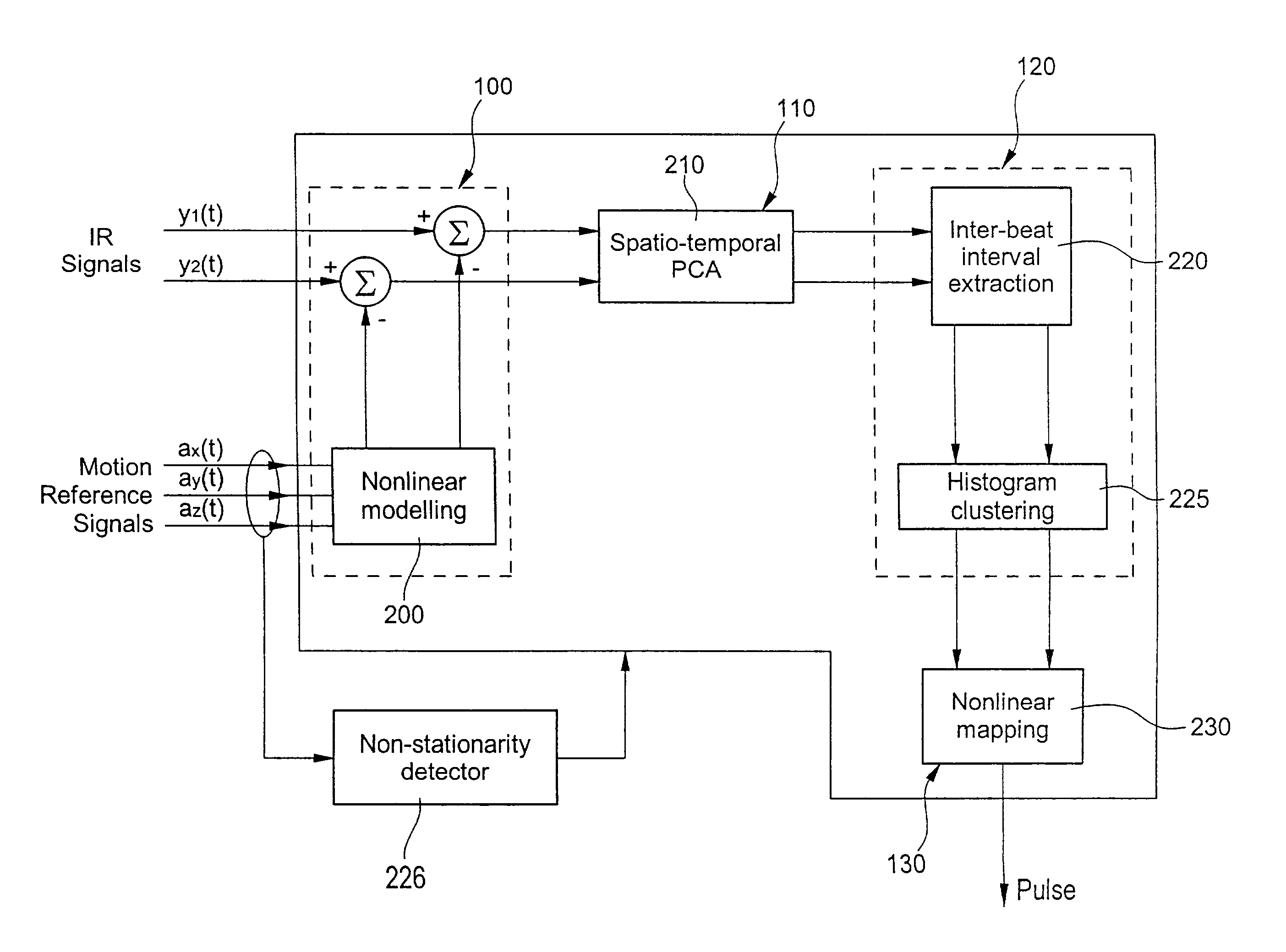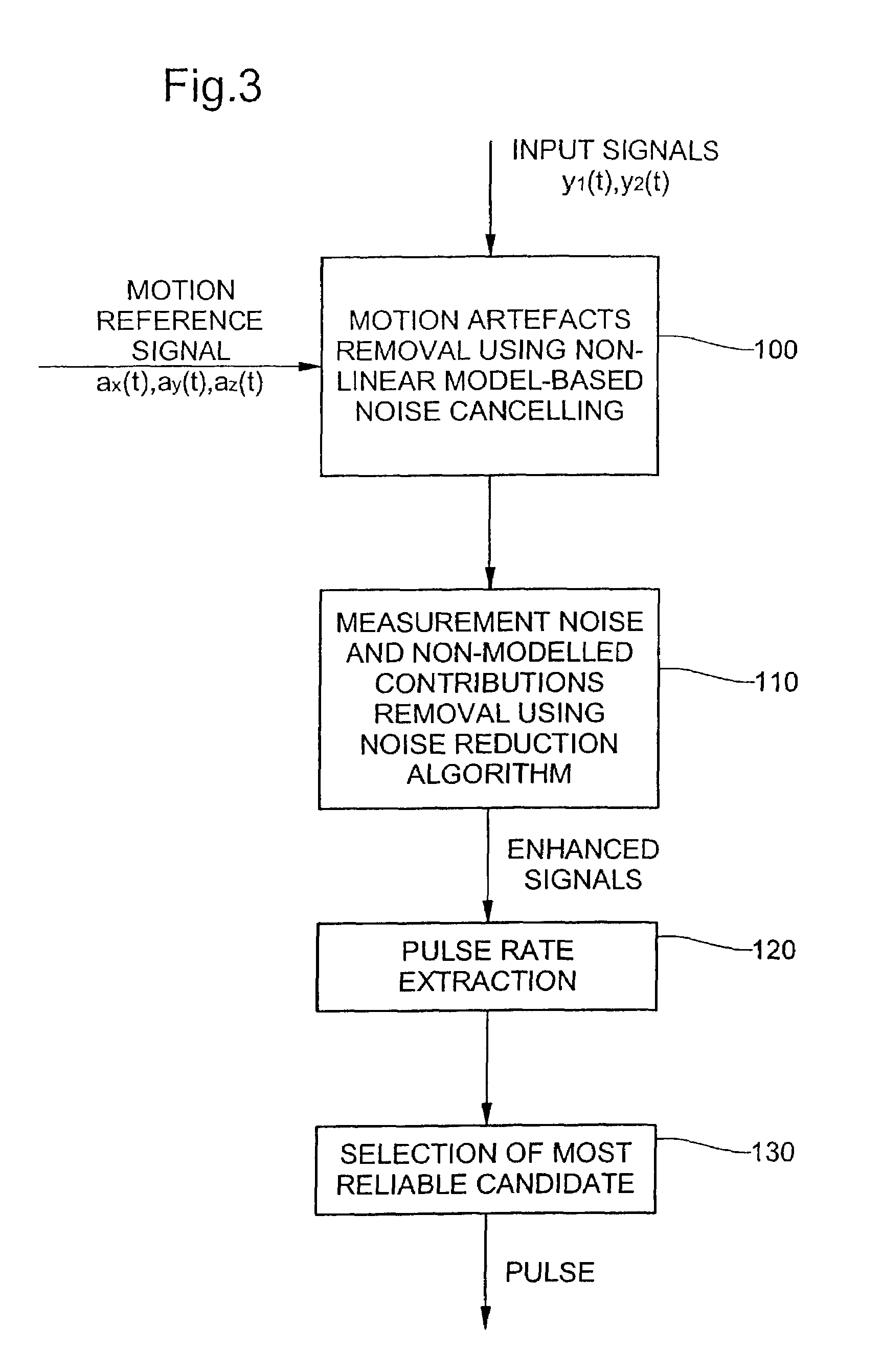Method and device for pulse rate detection
a pulse rate and detection method technology, applied in the field ofsignal processing, can solve the problems of reducing the comfort of users, affecting the accuracy of pulse rate detection, so as to reduce the standard deviation of the detected heart rate, avoid overfitting, and high robustness and accuracy
- Summary
- Abstract
- Description
- Claims
- Application Information
AI Technical Summary
Benefits of technology
Problems solved by technology
Method used
Image
Examples
Embodiment Construction
[0031]FIGS. 1 and 2 schematically show a top view of the bottom side and a side view of a wrist-located pulse rate detecting device, indicated globally by reference numeral 1, according to a preferred embodiment of the present invention.
[0032]While the invention will be described hereinbelow with respect to a portable device which is adapted to be worn on the wrist and which is based on the measurement of light reflected in the body tissue, it will be appreciated that the detecting device according to the present invention could be designed to be worn on other parts of the human body such as a patient's finger, nail, ear lobe or any other suitable member or part of the human body. In addition, the same principles could be applied to a detecting device based on the measurement of light transmitted through the body tissue (such as those typically used in pulse oximetry) where the signal to noise ratio is higher. In addition, these principles could be applied for pulse oximetry on the ...
PUM
 Login to View More
Login to View More Abstract
Description
Claims
Application Information
 Login to View More
Login to View More - R&D
- Intellectual Property
- Life Sciences
- Materials
- Tech Scout
- Unparalleled Data Quality
- Higher Quality Content
- 60% Fewer Hallucinations
Browse by: Latest US Patents, China's latest patents, Technical Efficacy Thesaurus, Application Domain, Technology Topic, Popular Technical Reports.
© 2025 PatSnap. All rights reserved.Legal|Privacy policy|Modern Slavery Act Transparency Statement|Sitemap|About US| Contact US: help@patsnap.com



